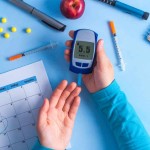
Bipolar Disorder
Bipolar disorder, also known as manic-depressive illness, is a brain disorder that causes unusual shifts in mood, energy, activity levels, and the ability to carry out day-to-day tasks. Symptoms of bipolar disorder are severe. They are different from the normal ups and downs that everyone goes through from time to time. Bipolar disorder symptoms can result in damaged relationships, poor job or school performance, and even suicide. But bipolar disorder can be treated, and people with this illness can lead full and productive lives.
Bipolar disorder often develops in a person’s late teens or early adult years. At least half of all cases start before age 25. Some people have their first symptoms during childhood, while others may develop symptoms late in life.
Symptoms
People with bipolar disorder experience unusually intense emotional states that occur in distinct periods called “mood episodes.” Each mood episode represents a drastic change from a person’s usual mood and behaviour. An overly joyful or overexcited state is called a manic episode, and an extremely sad or hopeless state is called a depressive episode. Sometimes, a mood episode includes symptoms of both mania and depression. This is called a mixed state. People with bipolar disorder also may be explosive and irritable during a mood episode.
Extreme changes in energy, activity, sleep, and behaviour go along with these changes in mood. Symptoms of bipolar disorder are described below.
Symptoms of mania or a manic episode include:
Mood Changes
-A long period of feeling “high,” or an overly happy or outgoing mood
-Extreme irritability
Behavioural Changes
-Talking very fast, jumping from one idea to another, having racing thoughts
-Being easily distracted
-Increasing activities, such as taking on new projects
-Being overly restless
-Sleeping little or not being tired
-Having an unrealistic belief in one’s abilities
-Behaving impulsively and engaging in pleasurable, high-risk behaviors
Symptoms of depression or a depressive episode include:
Mood Changes
-An overly long period of feeling sad or hopeless
-Loss of interest in activities once enjoyed, including sex.
Behavioural Changes
-Feeling tired or “slowed down”
-Having problems concentrating, remembering, and making decisions
-Being restless or irritable
-Changing eating, sleeping, or other habits
-Thinking of death or suicide, or attempting suicide.
Diagnosis
There are four basic types of bipolar disorder:
1.Bipolar I Disorder—defined by manic or mixed episodes that last at least seven days, or by manic symptoms that are so severe that the person needs immediate hospital care. Usually, depressive episodes occur as well, typically lasting at least 2 weeks.
2.Bipolar II Disorder—defined by a pattern of depressive episodes and hypomanic episodes, but no full-blown manic or mixed episodes.
3. Bipolar Disorder Not Otherwise Specified (BP-NOS)—diagnosed when symptoms of the illness exist but do not meet diagnostic criteria for either bipolar I or II. However, the symptoms are clearly out of the person’s normal range of behaviour.
4.Cyclothymic Disorder, or Cyclothymia—a mild form of bipolar disorder. People with cyclothymia have episodes of hypomania as well as mild depression for at least 2 years. However, the symptoms do not meet the diagnostic requirements for any other type of bipolar disorder.
A severe form of the disorder is called Rapid-cycling Bipolar Disorder. Rapid cycling occurs when a person has four or more episodes of major depression, mania, hypomania, or mixed states, all within a year. Rapid cycling seems to be more common in people who have their first bipolar episode at a younger age. One study found that people with rapid cycling had their first episode about 4 years earlier—during the mid to late teen years—than people without rapid cycling bipolar disorder. Rapid cycling affects more women than men. Rapid cycling can come and go.
When getting a diagnosis, a doctor or health care provider should conduct a physical examination, an interview, and lab tests. Currently, bipolar disorder cannot be identified through a blood test or a brain scan, but these tests can help rule out other factors that may contribute to mood problems, such as a stroke, brain tumor, or thyroid condition. If the problems are not caused by other illnesses, your health care provider may conduct a mental health evaluation or provide a referral to a trained mental health professional, such as a psychiatrist, who is experienced in diagnosing and treating bipolar disorder.
The doctor or mental health professional should discuss with you any family history of bipolar disorder or other mental illnesses and get a complete history of symptoms. The doctor or mental health professional should also talk to your close relatives or spouse about your symptoms and family medical history.
People with bipolar disorder are more likely to seek help when they are depressed than when experiencing mania or hypomania. Therefore, a careful medical history is needed to assure that bipolar disorder is not mistakenly diagnosed as major depression. Unlike people with bipolar disorder, people who have depression only (also called unipolar depression) do not experience mania.
Bipolar disorder can worsen if left undiagnosed and untreated. Episodes may become more frequent or more severe over time without treatment. Also, delays in getting the correct diagnosis and treatment can contribute to personal, social, and work-related problems. Proper diagnosis and treatment help people with bipolar disorder lead healthy and productive lives. In most cases, treatment can help reduce the frequency and severity of episodes.
Substance abuse is very common among people with bipolar disorder, but the reasons for this link are unclear. Some people with bipolar disorder may try to treat their symptoms with alcohol or drugs. However, substance abuse may trigger or prolong bipolar symptoms, and the behavioural control problems associated with mania can result in a person drinking too much.
Anxiety disorders, such as post-traumatic stress disorder (PTSD) and social phobia, also co-occur often among people with bipolar disorder. Bipolar disorder also co-occurs with attention deficit hyperactivity disorder (ADHD), which has some symptoms that overlap with bipolar disorder, such as restlessness and being easily distracted.
People with bipolar disorder are also at higher risk for thyroid disease, migraine headaches, heart disease, diabetes, obesity, and other physical illnesses. These illnesses may cause symptoms of mania or depression. They may also result from treatment for bipolar disorder.
Treatments
Bipolar disorder cannot be cured, but it can be treated effectively over the long-term. Proper treatment helps many people with bipolar disorder—even those with the most severe forms of the illness—gain better control of their mood swings and related symptoms. But because it is a lifelong illness, long-term, continuous treatment is needed to control symptoms. However, even with proper treatment, mood changes can occur. One of the largest treatment study ever conducted for a bipolar disorder found that—almost half of those who recovered still had lingering symptoms. Having another mental disorder in addition to bipolar disorder increased one’s chances for a relapse.
Treatment is more effective if you work closely with a doctor and talk openly about your concerns and choices. An effective maintenance treatment plan usually includes a combination of medication and psychotherapy.
Medications
Different types of medications can help control symptoms of bipolar disorder. Not everyone responds to medications in the same way. You may need to try several different medications before finding ones that work best for you.
Keeping a daily life chart that makes note of your daily mood symptoms, treatments, sleep patterns, and life events can help you and your doctor track and treat your illness most effectively. If your symptoms change or if side effects become intolerable, your doctor may switch or add medications.
The types of medications generally used to treat bipolar disorder include mood stabilizers, atypical antipsychotics, and antidepressants. For the most up-to-date information on medication use and their side effects always depend on your doctor.
Mood stabilizers are usually the first choice to treat bipolar disorder. In general, people with bipolar disorder continue treatment with mood stabilizers for years. Lithium (also known as Eskalith or Lithobid) is an effective mood stabilizer.
Anticonvulsants are also used as mood stabilizers. They were originally developed to treat seizures, but they also help control moods. Anticonvulsants used as mood stabilizers include:
Valproic acid or divalproex sodium (Depakote), approved by the FDA in 1995 for treating mania. It is a popular alternative to lithium. However, young women taking valproic acid face special precautions.
Lamotrigine (Lamictal), is used for maintenance treatment of the bipolar disorder. It is often effective in treating depressive symptoms.
Other anticonvulsant medications, including gabapentin (Neurontin), topiramate (Topamax), and oxcarbazepine (Trileptal).
Valproic acid, lamotrigine, and other anticonvulsant medications have an FDA warning. The warning states that their use may increase the risk of suicidal thoughts and behaviours. People taking anticonvulsant medications for bipolar or other illnesses should be monitored closely for new or worsening symptoms of depression, suicidal thoughts or behavior, or any unusual changes in mood or behaviour. If you take any of these medications, do not make any changes to your dosage without talking to your doctor.
What are the side effects of mood stabilizers?
Lithium can cause side effects such as:
Restlessness
Dry mouth
Bloating or indigestion
Acne
Unusual discomfort to cold temperatures
Joint or muscle pain
Brittle nails or hair.
When taking lithium, your doctor should check the levels of lithium in your blood regularly, and will monitor your kidney and thyroid function as well. Lithium treatment may cause low thyroid levels in some people. Low thyroid function, called hypothyroidism, has been associated with rapid cycling in some people with bipolar disorder, especially women.
Because too much or too little thyroid hormone can lead to mood and energy changes, it is important that your doctor check your thyroid levels carefully. You may need to take thyroid medication, in addition to medications for bipolar disorder, to keep thyroid levels balanced.
Common side effects of other mood-stabilizing medications include:
Drowsiness
Dizziness
Headache
Diarrhoea
Constipation
Heartburn
Mood swings
Stuffed or runny nose, or other cold-like symptoms.
These medications may also be linked with rare but serious side effects. Talk with your doctor or a pharmacist to make sure you understand signs of serious side effects for the medications you’re taking. If extremely bothersome or unusual side effects occur, tell your doctor as soon as possible.
Should young women take valproic acid?
Valproic acid may increase levels of testosterone (a male hormone) in teenage girls. It could lead to a condition called polycystic ovary syndrome (PCOS) in women who begin taking the medication before age 20. PCOS can cause obesity, excess body hair, an irregular menstrual cycle, and other serious symptoms. Most of these symptoms will improve after stopping treatment with valproic acid. Young girls and women taking valproic acid should be monitored carefully by a doctor.
Atypical antipsychotics are sometimes used to treat symptoms of bipolar disorder. Often, these medications are taken with other medications, such as antidepressants. Atypical antipsychotics include:
Olanzapine (Zyprexa), which when given with an antidepressant medication, may help relieve symptoms of severe mania or psychosis. Olanzapine can be taken as a pill or a shot. The shot is often used for urgent treatment of agitation associated with a manic or mixed episode. Olanzapine can be used as maintenance treatment as well, even when psychotic symptoms are not currently present.
Aripiprazole (Abilify), which is used to treat manic or mixed episodes. Aripiprazole is also used for maintenance treatment. Like olanzapine, aripiprazole can be taken as a pill or a shot. The shot is often used for urgent treatment of severe symptoms.
Quetiapine (Seroquel), risperidone (Risperdal) and ziprasidone (Geodon) also are prescribed to relieve the symptoms of manic episodes.
What are the side effects of atypical antipsychotics?
If you are taking antipsychotics, you should not drive until you have adjusted to your medication. Side effects of many antipsychotics include:
Drowsiness
Dizziness when changing positions
Blurred vision
Rapid heartbeat
Sensitivity to the sun
Skin rashes
Menstrual problems for women.
Atypical antipsychotic medications can cause major weight gain and changes in your metabolism. This may increase your risk of getting diabetes and high cholesterol. Your doctor should monitor your weight, glucose levels, and lipid levels regularly while you are taking these medications.
In rare cases, long-term use of atypical antipsychotic drugs may lead to a condition called tardive dyskinesia (TD). The condition causes uncontrollable muscle movements, frequently around the mouth. TD can range from mild to severe. Some people with TD recover partially or fully after they stop taking the drug, but others do not.
Antidepressants are sometimes used to treat symptoms of depression in bipolar disorder. Fluoxetine (Prozac), paroxetine (Paxil), sertraline (Zoloft), and bupropion (Wellbutrin) are examples of antidepressants that may be prescribed to treat symptoms of bipolar depression.
However, taking only an antidepressant can increase your risk of switching to mania or hypomania, or of developing rapid-cycling symptoms. To prevent this switch, doctors usually require you to take a mood-stabilizing medication at the same time as an antidepressant.
What are the side effects of antidepressants?
Antidepressants can cause:
Headache
Nausea (feeling sick to your stomach)
Agitation (feeling jittery)
Sexual problems, which can affect both men and women. These include reduced sex drive and problems having and enjoying sex.
Report any concerns about side effects to your doctor right away. You may need a change in the dose or a different medication. You should not stop taking a medication without talking to your doctor first. Suddenly stopping a medication may lead to “rebound” or worsening of bipolar disorder symptoms. Other uncomfortable or potentially dangerous withdrawal effects are also possible.
Some antidepressants are more likely to cause certain side effects than other types. Your doctor or pharmacist can answer questions about these medications. Any unusual reactions or side effects should be reported to a doctor immediately.
Should women who are pregnant or may become pregnant take medication for bipolar disorder?
Women with bipolar disorder who are pregnant or may become pregnant face special challenges. Mood stabilizing medications can harm a developing fetus or nursing infant. But stopping medications, either suddenly or gradually, greatly increases the risk that bipolar symptoms will recur during pregnancy.
Lithium is generally the preferred mood-stabilizing medication for pregnant women with bipolar disorder. However, lithium can lead to heart problems in the fetus. In addition, women need to know that most bipolar medications are passed on through breast milk. Warning has been issued by The FDA in US about the potential risks associated with the use of antipsychotic medications during pregnancy. If you are pregnant or nursing, talk to your doctor about the benefits and risks of all available treatments.
Antidepressants are safe and popular, but some studies have suggested that they may have unintentional effects on some people, especially in adolescents and young adults.
Psychotherapy
When done in combination with medication, psychotherapy can be an effective treatment for bipolar disorder. It can provide support, education, and guidance to people with bipolar disorder and their families. Some psychotherapy treatments used to treat bipolar disorder include:
Cognitive-behavioural therapy (CBT), which helps people with bipolar disorder learn to change harmful or negative thought patterns and behaviours.
Family-focused therapy, which involves family members. It helps enhance family coping strategies, such as recognizing new episodes early and helping their loved one. This therapy also improves communication among family members, as well as problem-solving.
Interpersonal and social rhythm therapy, which helps people with bipolar disorder improve their relationships with others and manage their daily routines. Regular daily routines and sleep schedules may help protect against manic episodes.
Psychoeducation, which teaches people with bipolar disorder about the illness and its treatment. Psychoeducation can help you recognize signs of an impending mood swing so you can seek treatment early, before a full-blown episode occurs. Usually done in a group, psychoeducation may also be helpful for family members and caregivers.
In a STEP-BD study on psychotherapies, researchers compared people in two groups. The first group was treated with collaborative care (three sessions of psychoeducation over 6 weeks). The second group was treated with medication and intensive psychotherapy (30 sessions over 9 months of CBT, interpersonal and social rhythm therapy, or family-focused therapy). Researchers found that the second group had fewer relapses, lower hospitalization rates, and were better able to stick with their treatment plans. They were also more likely to get well faster and stay well longer. Overall, more than half of the study participants recovered over the course of 1 year.
A licensed psychologist, social worker, or counsellor typically provides psychotherapy. He or she should work with your psychiatrist to track your progress. The number, frequency, and type of sessions should be based on your individual treatment needs. As with medication, following the doctor’s instructions for any psychotherapy will provide the greatest benefit.
Other treatments
Electroconvulsive Therapy (ECT)—For cases in which medication and psychotherapy do not work, electroconvulsive therapy (ECT) may be useful. ECT, formerly known as “shock therapy,” once had a bad reputation. But in recent years, it has greatly improved and can provide relief for people with severe bipolar disorder who have not been able to recover with other treatments.
Before ECT is administered, a patient takes a muscle relaxant and is put under brief anesthesia. He or she does not consciously feel the electrical impulse administered in ECT. On average, ECT treatments last from 30–90 seconds. People who have ECT usually recover after 5–15 minutes and are able to go home the same day.
Sometimes ECT is used for bipolar symptoms when other medical conditions, including pregnancy, make the use of medications too risky. ECT is a highly effective treatment for severely depressive, manic, or mixed episodes. But it is generally not used as a first-line treatment.
ECT may cause some short-term side effects, including confusion, disorientation, and memory loss. People with bipolar disorder should discuss possible benefits and risks of ECT with an experienced doctor.
Sleep Medications—People with bipolar disorder who have trouble sleeping usually sleep better after getting treatment for bipolar disorder. However, if sleeplessness does not improve, your doctor may suggest a change in medications. If the problems still continue, your doctor may prescribe sedatives or other sleep medications.
Herbal Supplements—In general, not much research has been conducted on herbal or natural supplements and how they may affect bipolar disorder. A herb called St. John’s wort (Hypericum perforatum), often marketed as a natural antidepressant, may cause a switch to mania in some people with bipolar disorder. St. John’s wort can also make other medications less effective, including some antidepressant and anticonvulsant medications. Scientists are also researching omega-3 fatty acids (most commonly found in fish oil) to measure their usefulness for long-term treatment of the bipolar disorder. Study results have been mixed.
Be sure to tell your doctor about all prescription drugs, over-the-counter medications, or supplements you are taking. Certain medications and supplements taken together may cause unwanted or dangerous effects.
Living With Bipolar Disorder :
If you know someone who has bipolar disorder, it affects you too. The first and most important thing you can do is help him or her get the right diagnosis and treatment. You may need to make the appointment and go with him or her to see the doctor. Encourage your loved one to stay in treatment.
To help a friend or relative, you can:
Offer emotional support, understanding, patience, and encouragement
Learn about bipolar disorder so you can understand what your friend or relative is experiencing
Talk to your friend or relative and listen carefully
Listen to feelings your friend or relative expresses and be understanding about situations that may trigger bipolar symptoms
Invite your friend or relative out for positive distractions, such as walks, outings, and other activities
Remind your friend or relative that, with time and treatment, he or she can get better.
Never ignore comments from your friend or relative about harming himself or herself. Always report such comments to his or her therapist or doctor.
Reference:HealthinessBox,NIMH










